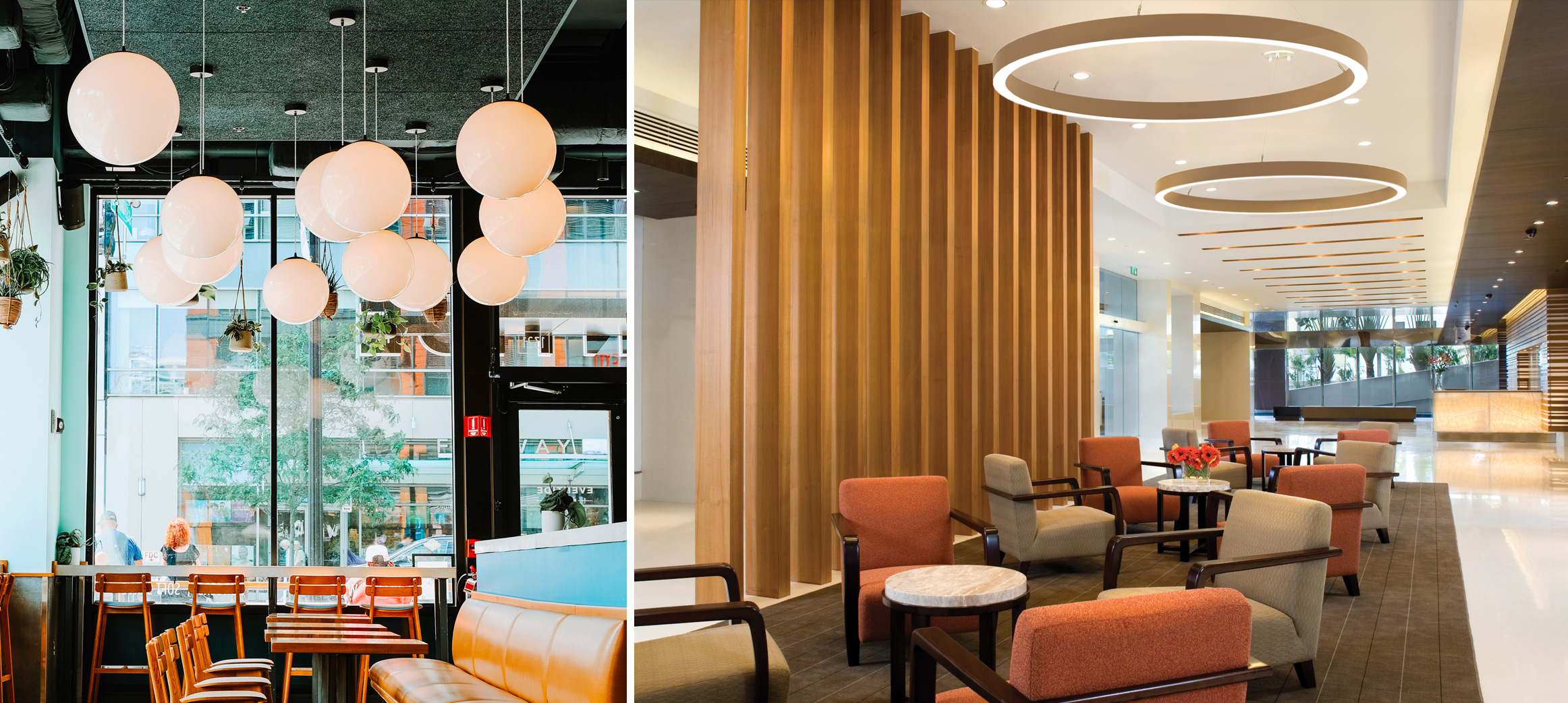In the world of restaurants and hospitality, the right ambiance is everything. It's the subtle art of lighting that can transform an ordinary dining experience into an unforgettable journey. From romantic candlelit dinners to vibrant, lively bars, architectural lighting plays a pivotal role in setting the mood and enhancing the overall atmosphere. In this blog, we'll explore the intricate world of lighting design for restaurants and hospitality spaces.
The Power of Mood Lighting
Creating the perfect ambiance is all about setting the right mood, and nothing accomplishes this as effectively as lighting. The choice of lighting fixtures, color temperature, and intensity can make or break the dining experience.
For instance, a high-end, romantic restaurant may employ warm, soft lighting to create an intimate and cozy atmosphere. In contrast, a lively sports bar might embrace bold, dynamic lighting to foster excitement and energy. Lighting design can be tailored to the specific character and theme of the establishment.
Focal Points and Accent Lighting
In restaurant and hospitality design, architectural lighting often involves the use of focal points and accent lighting. By illuminating specific areas, such as artwork, decorative features, or architectural elements, designers draw attention to these details and create visual interest.
In a hotel lobby, for example, well-placed downlights can highlight a magnificent sculpture, while in a fine dining restaurant, track lighting may accentuate the beauty of an exposed brick wall. These carefully directed beams of light become part of the storytelling, guiding patrons' eyes and enhancing their experience.
Task Lighting for Functionality
While creating an inviting ambiance is essential, practicality is equally important in the hospitality industry. Task lighting, which focuses on functionality, is essential in areas where specific activities take place.
In restaurants, task lighting is critical for the kitchen, bar areas, and waitstaff stations. Well-designed task lighting ensures that chefs can work safely and efficiently, bartenders can craft cocktails with precision, and servers can navigate their tasks seamlessly. Task lighting not only improves operational efficiency but also enhances the safety and comfort of staff.
Outdoor and Al Fresco Dining
Architectural lighting also extends to outdoor and al fresco dining areas. These spaces require special attention to create a seamless transition from indoor to outdoor environments.
String lights, lanterns, and strategically placed sconces can transform an outdoor patio or garden into a magical dining setting. These lighting elements not only extend the usability of outdoor spaces but also contribute to the overall charm and allure of the establishment.
Dynamic Lighting and Control
One of the most exciting developments in restaurant and hospitality lighting is the use of dynamic lighting and control systems. These systems allow for the adjustment of lighting conditions based on the time of day and specific events.
For example, a restaurant may have a "bright and vibrant" setting for breakfast, a "relaxed and cozy" ambiance for dinner, and even a "dynamic and colorful" mode for special events or celebrations. These dynamic changes in lighting contribute to a varied and engaging dining experience.
Conclusion
In the world of restaurants and hospitality, lighting design is both an art and a science. It's about creating an ambiance that aligns with the establishment's character, enhances the overall experience, and offers practical functionality. By carefully selecting lighting fixtures, accentuating focal points, considering task lighting, and embracing dynamic control systems, designers and architects can craft immersive and unforgettable dining and hospitality spaces.
Stay tuned for our next blog, "Innovations in Outdoor Lighting: Transforming Landscapes with Light," where we'll explore the transformative power of outdoor architectural lighting in public spaces and private estates.

No Comments.